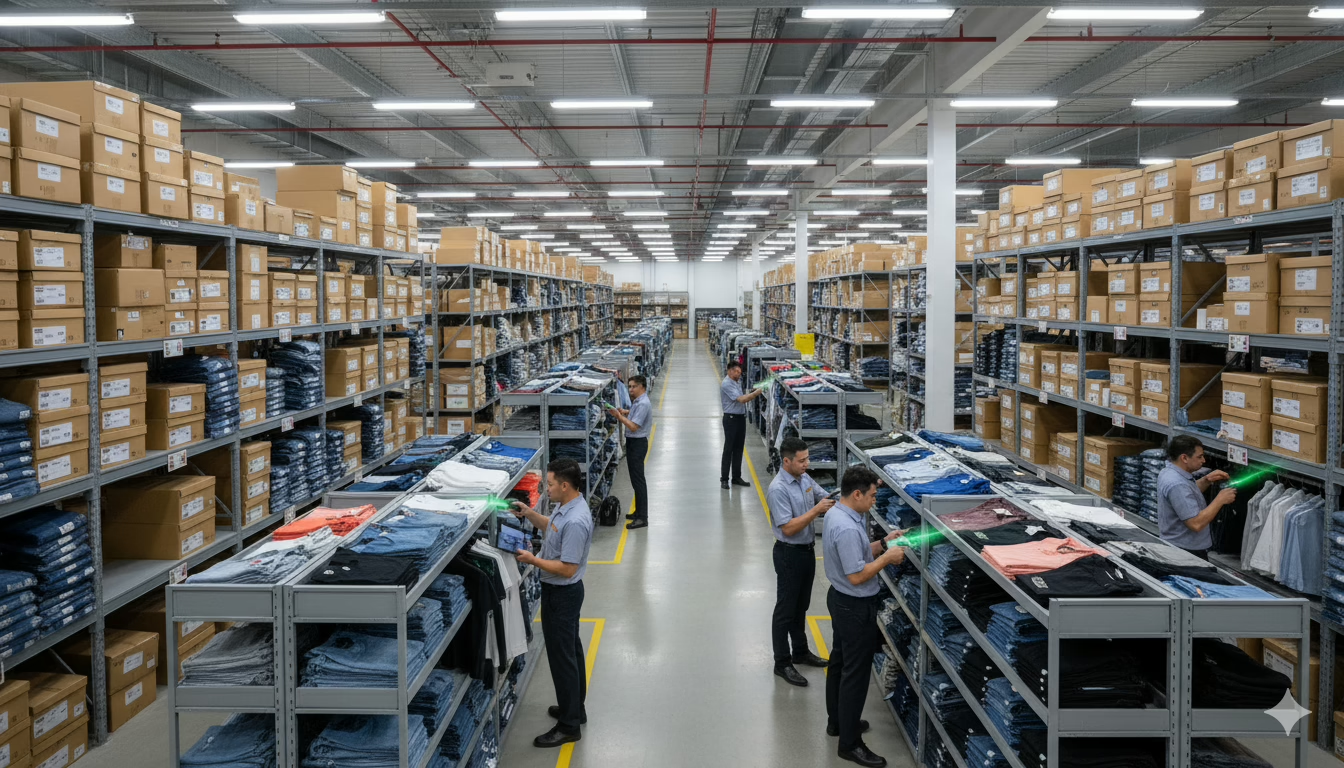
Returns and partial-order releases can quietly erode margins for apparel brands. Oversells, poorly managed assortments, and slow reverse logistics not only reduce profits but also harm customer trust. Production inventory management software must go beyond basic stock tracking. It needs to address size/color matrices, nested BOMs, WIP tracking, shop-floor control, real-time multi-channel sync, and tailored returns workflows specific to the apparel industry.
This article highlights five key takeaways to help you evaluate solutions, weigh ERP/MRP/WMS trade-offs, and prioritize features that drive margin protection and smooth implementation—all while keeping SMB pricing and migration challenges in focus. Let’s explore how to select the right system, optimize apparel-specific inventory flows, and validate ROI through real-world scenarios.
Key Takeaways
- Apparel-focused inventory management software goes beyond stock tracking to solve unique challenges like size/color matrices, seasonal assortments, multi-channel synchronization, and returns workflows—all while remaining affordable for SMBs.
- Specialized systems often outperform broader ERP or MRP/WMS platforms for apparel brands. These systems focus on BOM, WIP, and variant-heavy workflows without the unnecessary complexity or misalignment of generic solutions.
- Look for software that natively handles apparel-specific needs like size/color matrices, nested BOMs, production scheduling, and WIP tracking. This ensures accurate inventories for seasonal launches, kit builds, and assortment planning.
- Effective returns management workflows—complete with grading, rework, and restocking—protect margins and reduce shrinkage. Features like partial-order releases, reverse logistics, and rule-based restocking keep operations running smoothly.
- Real-time synchronization across ecommerce, 3PLs, wholesale, and retail channels is crucial. Native integrations with platforms like Shopify, QuickBooks, and shipping portals prevent oversells, streamline fulfillment, and support accurate forecasting.

Why Apparel Returns Demand Specialized Inventory Management
Apparel ecommerce return rates often reach 20–40%, with returns taking 2–3 times longer to process than inbound shipments. Poorly managed size/color variants often lead to oversells and cancellations, impacting both revenue and customer satisfaction. For example, a single seasonal style with 10 sizes and 6 colors creates 60 unique SKUs, making precise inventory control essential.
Production inventory management software designed for apparel ties production workflows (BOM, WIP) and returns processes to allocation and ATP (available-to-promise). This ensures returns quickly become resale-ready inventory instead of cost sinks, while preventing oversells and improving fulfillment accuracy.
ERP vs. MRP vs. WMS vs. Specialized Inventory Management Software
ERP systems focus on financials, MRP handles material planning, and WMS manages warehouse operations. However, apparel brands often need production inventory management software (PIMS) to handle size/color matrices, nested BOMs, and returns processes efficiently. PIMS solutions bridge production and inventory, offering lightweight, apparel-specific workflows without the unnecessary complexity of traditional ERP systems.
Returns and Partial Releases: Protecting Margin and Enhancing Fulfillment
Returns are more than a warehouse issue—they’re a production problem. Partial-order releases let you fulfill available stock immediately while holding the rest until ready, reducing cancellations and protecting delivery promises. Implementing A/B/C grading, rework workflows, and automated restocking rules can speed up resale cycles and safeguard margins.
Key Features for Apparel Production Inventory Management
- Matrix-Native SKUs and Assortment Planning: Prevent SKU sprawl by normalizing style→color→size attributes.
- Nested BOMs and Production Scheduling: Track dye-lot variances, substitutions, and production line capacities to stay on schedule.
- Real-Time Multi-Channel Sync: Avoid oversells by syncing ecommerce, wholesale, and retail inventories in real-time with platforms like Shopify and JOOR.
- Reverse Logistics and Returns Management: Use automated grading, rework orders, and intelligent reallocation to minimize loss and increase recovery.
- Robust Reporting and Forecasting: Track metrics like OTIF (on-time in full), fill rate, and return reasons to optimize planning and identify issues early.
Implementation and Migration for SMB Apparel Brands
Switching from spreadsheets or legacy systems to production inventory software typically takes 6–12 weeks for SMBs. Start with a phased go-live approach, such as piloting ecommerce first, followed by wholesale. Focus on data cleanup, SKU normalization, and training to ensure a smooth transition.
Pricing and ROI for SMB Apparel Brands
Specialized inventory management software starts at $750/month for HQ solutions and $1,500/month for WMS functionality. ROI drivers include reduced oversells, faster resale cycles, and labor savings. SMB-friendly pricing and quick implementation make these systems an accessible solution for growing apparel brands.
Final Thoughts
Apparel brands face unique inventory challenges—large variant matrices, seasonal launches, and high return rates—that demand specialized software. Production inventory management software connects BOMs, WIP, size/color matrices, and returns workflows to ATP, turning returns into resale-ready inventory, reducing oversells, and supporting partial-order releases to maintain OTIF.
To see how production inventory management software can optimize your operations, explore Blastramp’s solutions and integrations: Blastramp.